Every representative of the fair sex strives to have beautiful and healthy skin throughout her life. But on the way to this dream there are often obstacles such as age spots on the face. They are not so easy to get rid of, and they annoy the lady with their unaesthetic appearance.
Many people naively believe that the appearance of pigmentation on the face is associated precisely with the condition of the skin and use only cosmetic preparations to combat it. As a rule, such methods are not enough and the spots either do not disappear, or fade insignificantly, or upset their owner with their steady progression. Such an unsuccessful fight against them is explained by the fact that there are many reasons for their appearance, and almost all of them are associated with disturbances in the functioning of the body.
In our article we will talk about the reasons for the appearance of age spots on the face and various methods of getting rid of them and treating them. Such knowledge will allow you to look at this problem from a different perspective and take timely measures to combat it.
Causes and types of pigmentation on the face
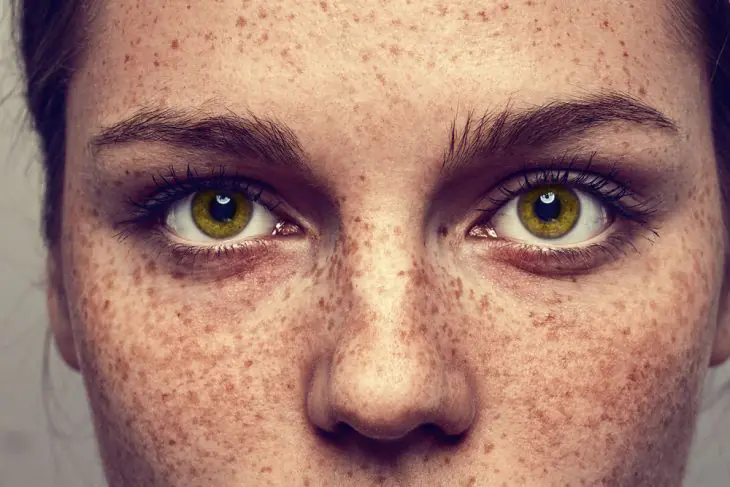
Age spots can appear in both young girls and women over 50. As a rule, their appearance is more likely over the age of 35-40. In isolated cases, they go away spontaneously; more often, getting rid of them requires considerable effort.
A pigment spot is an area of excessive accumulation of melanin: a special pigment found in various layers of the epidermis. When it is deposited in the upper layer of the skin, pale spots (for example, freckles or moles) form. They can be from light yellow to brown and, in most cases, do not cause much trouble or worry to their owner.
Hyperpigmentation, which is deposited in the deeper layers of the epidermis, looks completely different - a dark brown spot appears on the surface of the skin (it can even rise above the surface of the skin). Such pigmentations are more frustrating for women, and in some cases they greatly interfere with them (for example, applying makeup, putting on or taking off clothes).
Doctors distinguish the following types of pigmentation:
- freckles;
- chloasma;
- lentigo;
- moles and birthmarks.
What can cause increased levels of melanin production? There are many reasons for the appearance of age spots.
Heredity
This type of pigmentation is due to a genetic predisposition. Typically, pigment spots are already noticeable in newborns, and they can only be eliminated using stronger techniques (for example, laser resurfacing).
Hormonal diseases and changes
Deeply colored and irregularly shaped pigment spots may appear during menstruation, pregnancy, the first year after childbirth, or due to hormonal imbalances caused by a medical condition. Doctors call them chloasma and do not recommend doing anything specifically to eliminate them.
In case of diseases that cause hormonal imbalance, treatment of the underlying disease is recommended. The causes of endocrine pigmentation can be gynecological diseases, neoplasms of the pituitary gland, dysfunction of the thyroid gland, etc. After treatment of the underlying disease and normalization of the woman’s hormonal levels, they become significantly pale and gradually disappear.
Skin injuries
Such pigmentation can be provoked by severe cases of acne, furunculosis, chemical and thermal burns, unsuccessful peeling and other injuries. Their intensity depends on the individual characteristics of the skin and the depth of the traumatic lesion. In some cases, local remedies to eliminate such age spots are not enough, and complex treatment must be carried out.
Prolonged exposure to ultraviolet rays
Pigment spots of this type are provoked by aggressive exposure to sunlight or other sources of ultraviolet radiation. They often appear on the face, because the skin of this area of the body is the thinnest and most vulnerable. Melanin is designed to protect the skin from burns and paints it a darker color, but if you abuse the solarium or stay in the active open sun during the daytime, the pigment layer can lie unevenly. Spring rays of the sun have a particularly aggressive effect, because after winter the skin of the face is partially depigmented. In some cases, even the use of sunscreen cannot protect it from the appearance of unsightly spots. You should not spend too much time in the direct rays of the daytime sun; morning and early evening hours are preferable.
Diseases of the kidneys, liver, gallbladder and intestines
Reddish spots appear in women with intestinal dysfunction, brown spots with liver or gall bladder pathologies, and yellowish brown spots with kidney diseases. They do not require separate treatment; they turn pale and disappear when a proper diet is prescribed and the functions of the internal organs are normalized.
Nervous disorders, mental illness and frequent stress
Such pigmentation is caused by metabolic and hormonal imbalances. The spots can come in various shapes and sizes.
Lack of vitamins or minerals
Quite a common reason! Spots can be caused by not consuming enough vitamin C or copper foods. Once the deficiency is eliminated, they gradually disappear.
Taking medications
Sometimes spots on the skin appear after long-term use of certain medications. They are most often caused by taking antibiotics. Be sure to contact your doctor and inform about the appearance of pigmentation; your medication will be replaced or discontinued.
Allergic reactions, improper use of skin care products and poor-quality cosmetics
Rash and spots on the skin appear immediately after applying a cosmetic or other product. They can be provoked by essential oils, low-quality ingredients in decorative cosmetics, and unreasonably frequent cleansing of the skin.
Aging
Alas, often dark spots on the face, as well as on the neck and hands can appear over the age of 40-45 years. They are caused by increased production of melanin and its uneven distribution, hormonal changes and aging of the skin layers. Also, their appearance may be associated with the presence of chronic diseases, which increase with age.
The appearance of pigmentation in itself in most cases is not dangerous, but it always signals a malfunction in one of the body systems. When it appears, you should think about the state of your health and undergo a diagnostic examination. What it will be like will be determined by the doctor.
Treatment of age spots on the face
The main principle of treating pigmentation is to eliminate the cause of its occurrence. To identify it, you may need to consult a therapist, gynecologist, endocrinologist or gastroenterologist. After making a diagnosis, the doctor will prescribe a course of treatment for the underlying disease, after which the spots on the skin of the face will either disappear spontaneously or turn pale, and it will be much easier to get rid of them.
Most women want to quickly get rid of age spots that spoil their appearance, and use various methods to get rid of these unpleasant cosmetic defects.
A cosmetologist can recommend many ways to eliminate hyperpigmentation on the face:
- whitening;
- cosmetic procedures;
- cosmetical tools;
- traditional medicine recipes.
Skin whitening for age spots
Various substances can be used as “whiteners” for hyperpigmentation:
- Hydrogen peroxide - a 3% solution can only be applied to the area of the pigment spot, as this product can injure the skin.
- Mercury cream: can be used short-term, as long-term use of this aggressive product can cause skin irritation. note: It is contraindicated in pregnant and lactating women.
- Zinc paste – gently whitens the skin, helps eliminate wrinkles and acne.
Cosmetic procedures for age spots
These techniques can only be performed by a cosmetologist or dermatologist and are selected individually depending on the severity of pigmentation, location, indications and contraindications.
Skin whitening is promoted by:
- Ultrasonic or chemical peeling: the type of procedure is determined by the doctor. Glycolic, fruit and other acids can be used for chemical peeling. They promote exfoliation and renewal of the upper layers of the skin and eliminate pigmentation. For ultrasonic peeling, special equipment is used to introduce various drugs into the upper layers of the skin, causing skin renewal and whitening.
- Laser treatment is performed using laser beams that gently remove the top layer of skin and promote its renewal. This modern technique is quite traumatic and painful. After its completion, the use of various healing drugs is required. It is better to carry out this procedure in winter, since this is the time of year when the sun's rays are least active. In addition to whitening the skin, laser beams help improve its condition: it rejuvenates, becomes more elastic, and acquires a beautiful and even tone.
- Phototherapy: This procedure is performed using a laser device that produces intense pulses of light. Light waves hit only areas of the pigment spot and destroy cells with a high melanin content.
Cosmetics for age spots
Cosmetic whitening creams are most commonly used to remove areas of pigmentation. Dear women, treatment with such products must be carried out under the supervision of a doctor, because inept use of them can cause the opposite effect - there are more pigment spots, they contrast more strongly with the main skin tone.
The doctor will determine the type of whitening cream and rule out possible contraindications to its use. Some cosmetics cannot be used if you have kidney or liver disease. They are also contraindicated during pregnancy and lactation.
The most commonly used whitening cosmetics are:
- Achromin Alen Mak cream gently removes stains and protects facial skin from ultraviolet rays.
- Retin-A cream helps reduce the amount of melanin in the skin.
- VC-IP solution (based on vitamin C) - it is able to prevent hyperpigmentation of the upper layers of the skin.
Clinical studies have proven the effectiveness of complex treatment of hyperpigmentation problems. Sun protection and use of a topical product.
Traditional recipes for age spots

In some cases, with superficial age spots on the face, time-tested folk recipes for masks and lotions can help.
- Fresh cucumber mask: grate the cucumber on a fine grater, apply the resulting paste to your face for half an hour. You don’t have to wash off the mask, but simply remove it with a napkin.
- Yeast and lemon juice mask: 20 g of fresh yeast are mixed with 15 ml of lemon juice. The resulting paste is applied to the face for 15-20 minutes and washed off with warm water.
- Parsley lotion: 2 tablespoons of finely chopped parsley, pour 100 ml of water. Let it brew for an hour and strain. Add 100 ml of milk and wipe cleansed face twice a day.
- Pour the strained parsley infusion into water molds and place in the freezer. Washing them in the morning quickly removes stains, tones the skin, and tightens pores.
- Rice flour, honey and vinegar mask: mix 2 teaspoons of rice flour with 1 teaspoon of honey and 1 tablespoon of vinegar. Apply the mixture to your face for half an hour. Remove the mask with a dry cloth and rinse your face.
- Almond and lemon juice mask: grind half a glass of almonds through a meat grinder and mix with lemon juice and a small amount of water. Apply the mixture to your face for 20 minutes. Rinse off the mask with warm water.
- Potato and egg yolk mask: boil one potato in its skin, peel it and mash with a fork. Add egg yolk to the resulting puree and mix. Apply to your face and keep the mask on until the potatoes have cooled completely. Rinse off with warm water.
- Protein mask: mix the white of 1 egg with the juice of 1/4 lemon and 3-4 drops of hydrogen peroxide. Apply to skin for 10 minutes, rinse with water or milk, apply nourishing cream.
- Lotion made from milk and vodka: mix milk and vodka in a ratio of 3:1. Wipe your face at night.
Traditional recipes have a fairly gentle effect on the skin of the face, but in order to avoid skin irritation and allergic reactions, it is recommended to try applying the product to a small area of skin on the inner surface of the forearm before using them. If redness does not appear after 15-20 minutes, the product can be used.
After removing age spots on your face, don’t stop taking care of your health! Use sunscreen, and also visit your doctor on time to correct the underlying disease, eat right, and in early spring, do not forget about preventive courses of vitamin C and nicotinic acid - all this will help prevent hyperpigmentation of the skin on your face, and your reflection in the mirror will always delight you . Your beauty is entirely in your hands!
Which doctor should I contact?
If pigment spots or other changes in skin color appear, you should consult a dermatologist. In order to find out the cause of the spots, you may need to consult a gynecologist, endocrinologist, gastroenterologist, or therapist. A cosmetologist will help remove spots on the skin.
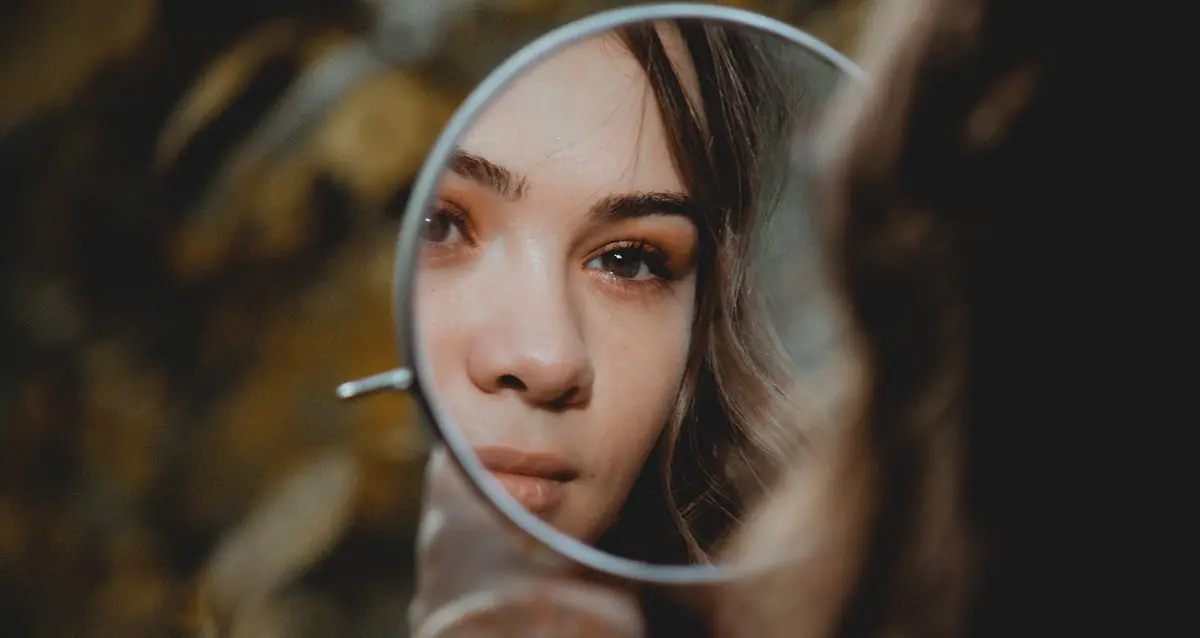
Even the sun has spots. But this is unlikely to reassure you when your skin acquires such a flaw. With the arrival of spring, under the influence of ultraviolet radiation, the problem worsens even more. Pigment spots on the face and body are associated with impaired production of melanin (coloring pigment). What to do: stock up on foundation or run to the doctor? Together with boOmbate, we will understand the reasons for the formation of age spots and ways to combat them!
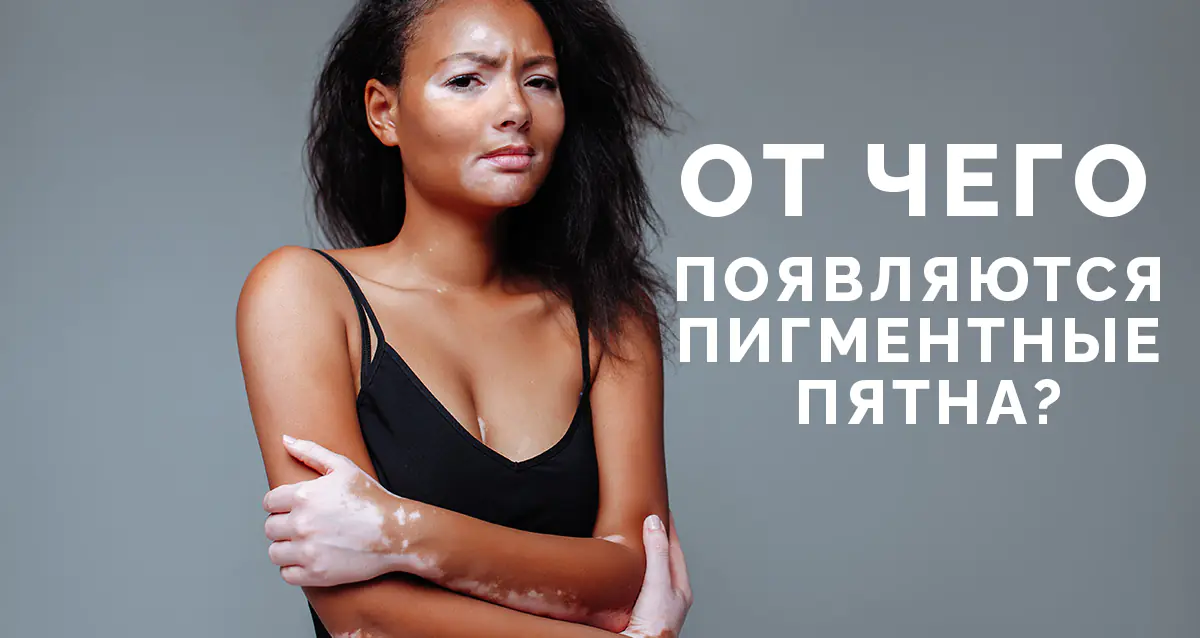
This is a cosmetic defect, the appearance on the skin of oval, flat spots from light brown to dark brown as a result of age-related changes, insolation, hormonal imbalance and a number of other reasons. In scientific terms, this is hyperpigmentation (increased concentration of pigments), excessive coloring of certain areas of the skin.
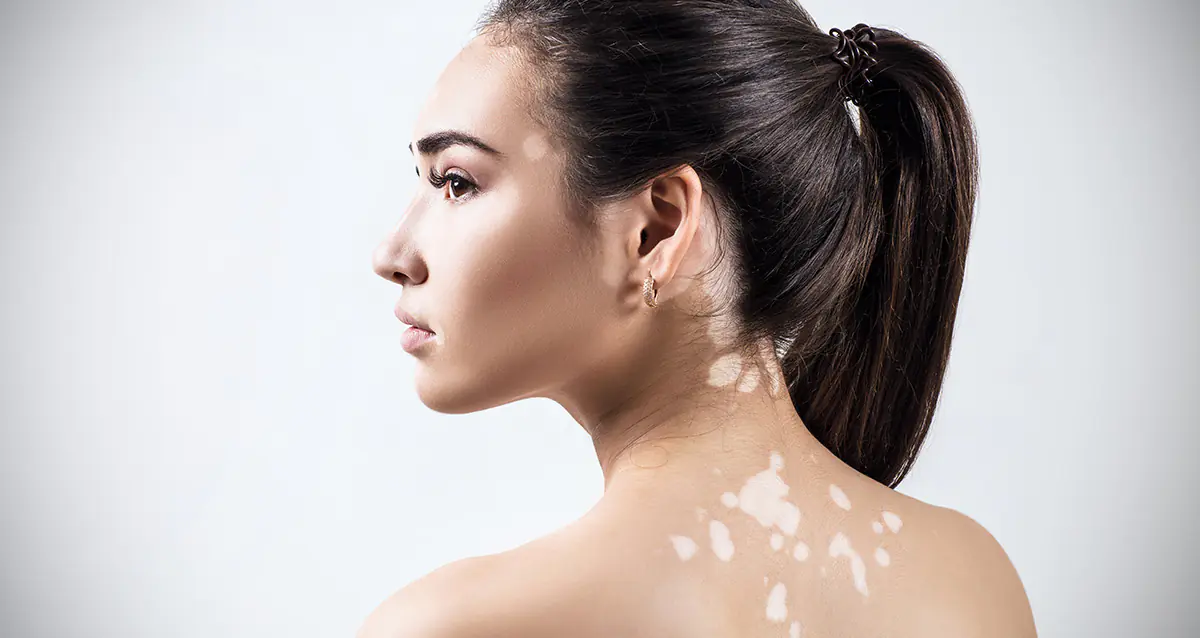
Our skin produces pigments: melanin, melanoid, carotene, reduced hemoglobin and oxyhemoglobin. These 5 components are responsible for the color of the skin. Melanin plays the main role here - it protects against harmful UV rays. There are cases of its increased synthesis, which leads to the formation of hypermelanosis - the so-called pigment spots. They may be congenital or acquired. Often accompanied by roughening of the skin, increased visibility of blood vessels, dryness and wrinkles.
- prolonged exposure to active sunlight - ultraviolet radiation promotes increased melanin production;
- frequent stress, nervous and mental disorders;
- heredity;
- disorders of the thyroid gland;
- liver and gallbladder diseases;
- problems in the field of gynecology;
- pregnancy (in most cases, you don’t have to put up with such age spots for a long time - they disappear soon after childbirth);
- lack of vitamin C;
- imbalance of hormones associated with taking hormonal drugs (oral contraceptives, antimicrobial agents, cytostatics);
- skin diseases, burns and damage to the integument;
- use of a number of cosmetics.

Age spots can be divided into several types:
- Brown (melasma, chloasma). They appear during menopause in women, as well as during pregnancy. Associated with impaired melanin production.
- White and red pigment manifestations. They can mainly appear after suffering red lichen, mostly in women aged 40 to 60 years.
- Pink pigment spots. A common cause of such spots is pityriasis rosea. Manifests itself in the form of scaly rashes.
- Lentigo. As a rule, these are brown or dark brown spots that protrude slightly above the skin. They have an oval or round shape ranging in size from a small dot to a small coin. Among them are solar lentigo and age-related (senile). Solar lentigo appears as a result of long exposure to ultraviolet radiation. Mostly young people who spend hours under the scorching sun on the beach are susceptible to such spots. Another category of cosmetology clinics that address this problem are solarium lovers. Localization: such pigment spots can be seen on the shoulders, chest, hands and neck. Senile lentigo appears in old age (sometimes after 40 years), it is often called “senile ripples” or senile keratomas. Their appearance is mainly due to a slowdown in metabolism. Against the background of hormonal changes during menopause, there is a sharp increase in the number and intensity of pigment spots. Localization: such pigment spots can be seen on the forearms, face, décolleté, and upper back. They are very difficult to decoratively disguise. In the case of lentigo, mechanical and chemical peels help, exfoliating the upper layer of the epidermis.
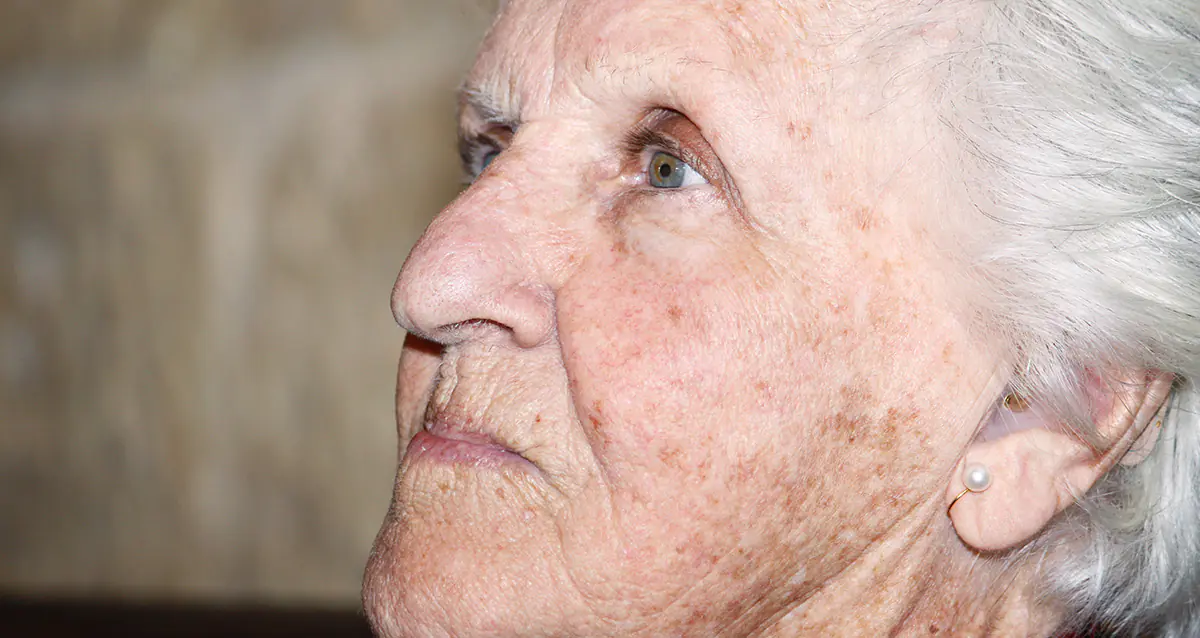
- Freckles (ephelids) - pigment spots on the arms, face and chest with clearly defined boundaries. This is a particularly pressing problem for people with very fair skin, blondes and redheads. This type of age spots has a hereditary factor and depends on the time of year: in autumn and winter, when the sun is a rare occurrence, freckles are hardly noticeable, and in spring and summer the intensity of their color increases, as does the number of freckles themselves. The size and shade of freckles can vary: from large brown to light-colored, barely noticeable. The first freckles can appear at the age of 4-6, and after 30, the number of such elements on the skin decreases sharply. The danger of such age spots is very low: freckles do not pose a threat to the body, and many girls do not consider them a cosmetic defect at all, but even, on the contrary, an adornment. But if freckles still become the cause of your psychological discomfort, it doesn’t matter. They can be discolored using bleaching creams, and a sunscreen lotion with a high SPF filter will prevent them from appearing in the sun (read how to choose SPF protection here). Such age spots can be erased using chemical (fruit or lactic acid) and Hollywood peeling, since their depth is minimal.
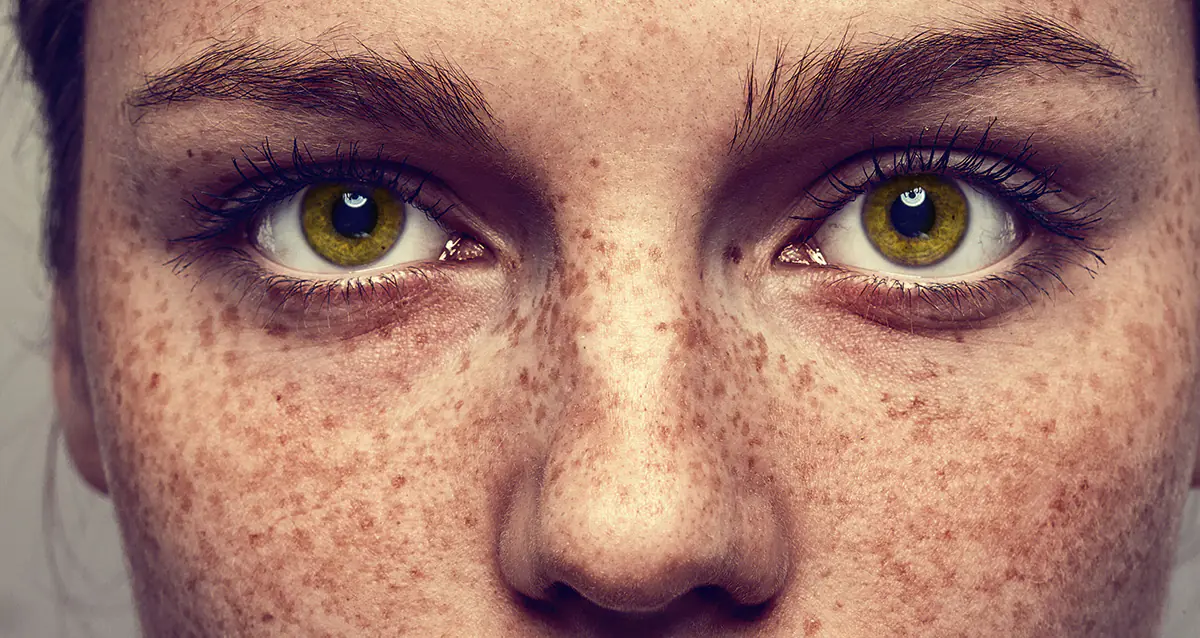
- Chloasma. These are the largest pigment spots on a large area of the skin. Most often they are the result of a hormonal imbalance in the body (at the beginning of the menstrual cycle, menopause, taking hormones or oral contraceptives). Mostly appear on the face of young women. Chloasma is characterized by an irregular outline and a tendency to merge into one large spot of an intricate shape. Sometimes such pigmentation can affect the skin of the ears and neck, and insolation only aggravates the situation - prolonged exposure to the sun leads to an increase in the scale of the problem. Prolonged use of aromatic oils and hormone-containing local preparations can also provoke the formation of age spots and intensify their manifestations. After their cancellation, chloasma, as a rule, disappears on its own.
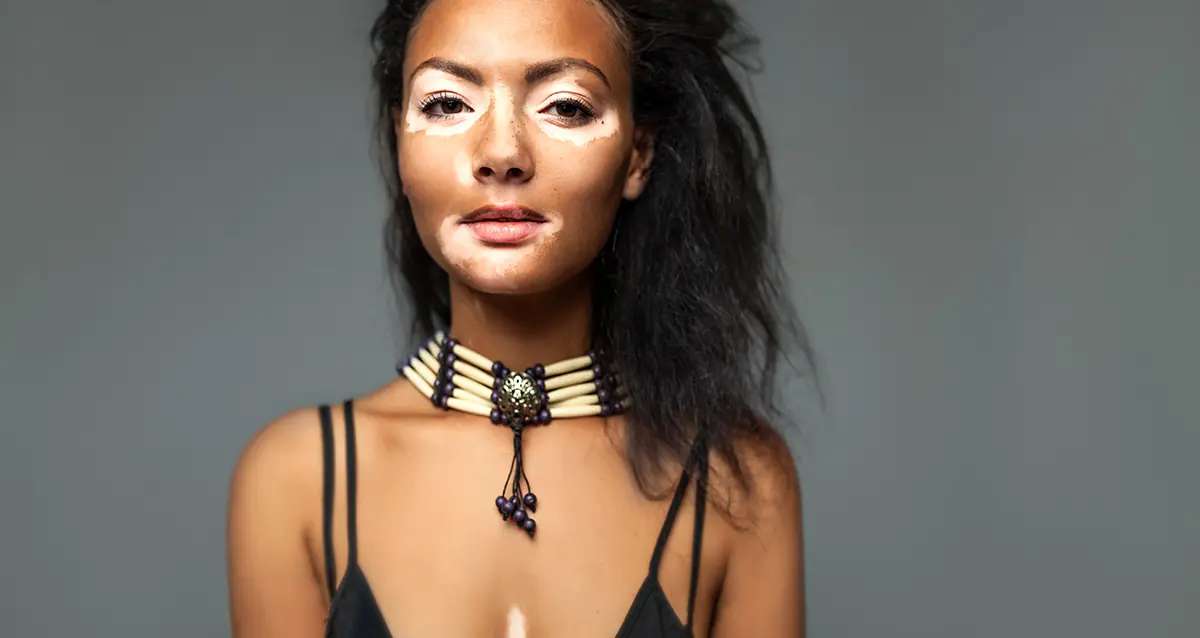
- Nevi - moles or so-called birthmarks, which are accumulations of melanocytes filled with melanin. This is the most common type of pigmentation and is distinguished by its black or yellowish-brown color. Moles can be either convex or smooth and have defined edges. Nevi appear for the same reason - as a result of uneven distribution of melanin. Every person has a small number of moles, including congenital ones. But if there is a tendency towards their growth or painful sensations, then you should pay attention to this. A pigment spot can develop into a malignant neoplasm - melanoma. Inflammation, changes in shape and color, pain and superficial ulcers may indicate this process.
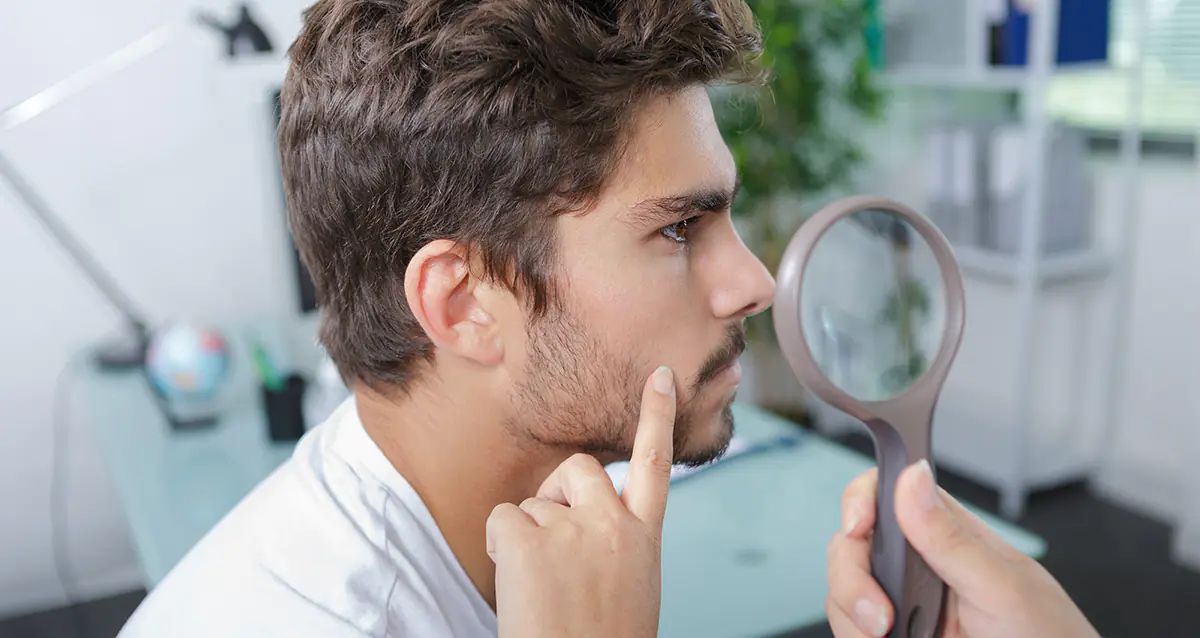
- Post-acne. These are nothing more than pigment spots that remain in the place of former acne and inflammatory skin processes. Most often, post-acne torments young people suffering from acne. Acne marks go away on their own after a long time. But if the problem does not solve itself, then it can be dealt with using cosmetic procedures.
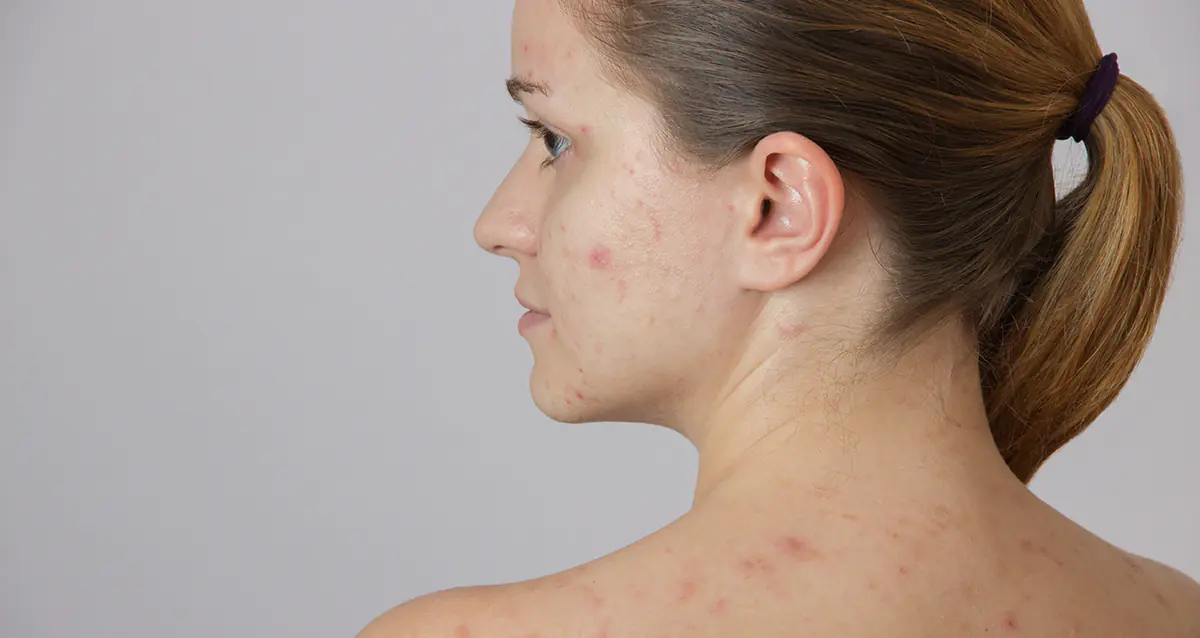
- Skin hypopigmentation. These include vitiligo and albinism, in which melantocytes are completely or partially absent from the skin (i.e., it becomes discolored). These are rare pathological skin conditions that are very difficult to treat. The phenomena are still poorly understood and their causes are not known for certain. This type of age spots has increased sensitivity to the sun - hypopigmented skin should be hidden from ultraviolet radiation, as there is a high risk of burns and the development of oncological processes.
Before contacting a cosmetologist and bleaching, you should check the pigmentation for its quality with a doctor. Particular attention should be paid to spots with a tendency to grow and painful sensations. And only if indicated, skin imperfections can be corrected. For this, advanced procedures are used that are provided by clinics and beauty salons:
- Laser skin resurfacing. The laser removes the top layer of skin painlessly, acting locally on pigmented areas. The beam destroys melanin, causing the problem area to become lighter. After a few days, the skin peels off, leaving behind a layer of normal color.
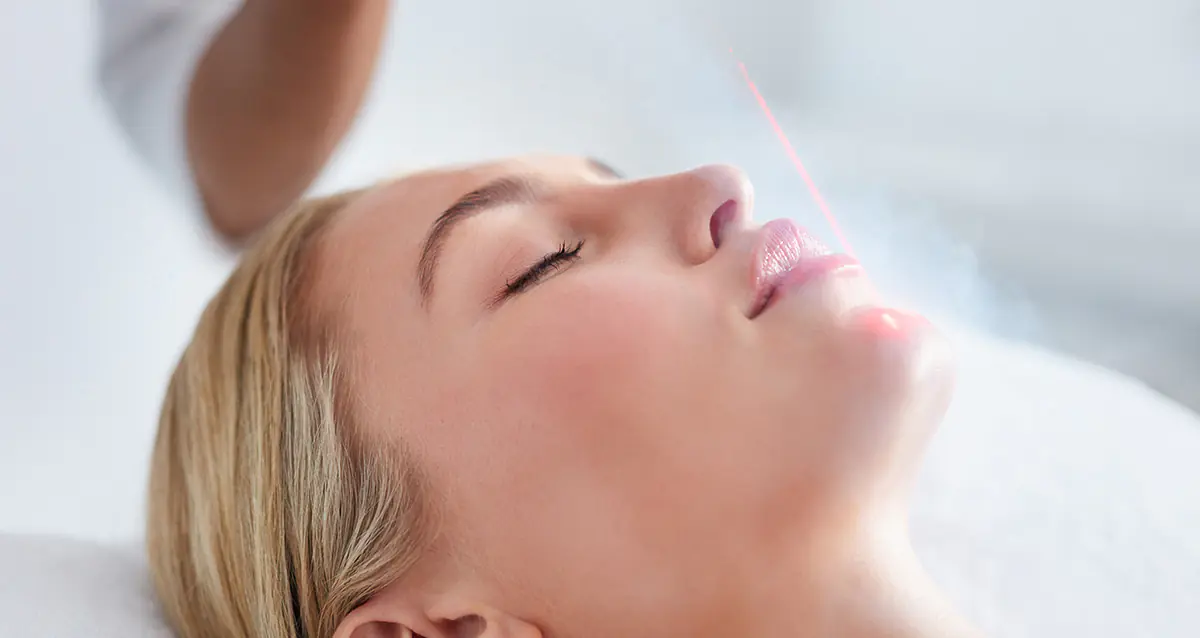
- Peelings. Chemical peeling based on fruit acids, such as almond, has an excellent effect against age spots. In addition to the exfoliating effect, fruit acids also have a regenerating effect. Unlike laser technologies, peelings are much cheaper, but give a less pronounced effect.
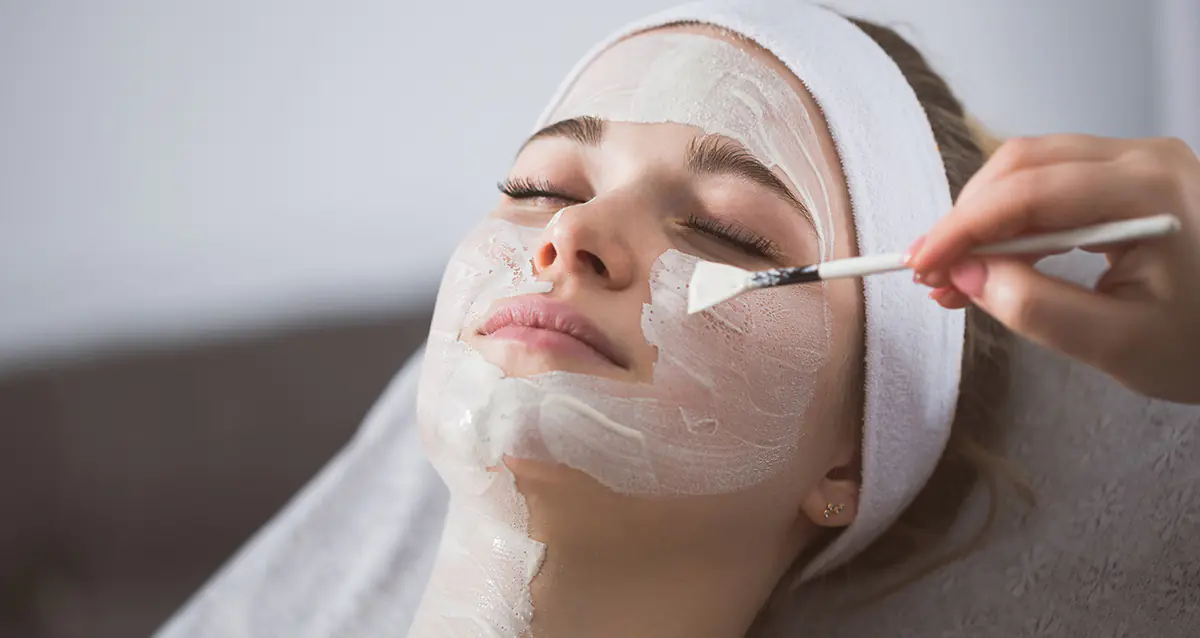
We name the main reasons for the appearance of age spots, and at the same time learn to distinguish banal freckles from “senile buckwheat”, prevent hyperpigmentation and fight it if it has already appeared.
- What are pigment spots
- Causes of pigmentation
- Types of pigmentation
- Methods for eliminating age spots
- Cosmetic ingredients effective against pigmentation
- Prevention of hyperpigmentation
- Fighting pigmentation at home
What are pigment spots
Pigment spots are darkened areas of the skin that appear as a result of a local accumulation of the melanin pigment, which gives color to the skin and hair. The size, shade, and number of spots can vary: from a scattering of golden freckles to single dark brown areas.
Age spots can appear at any age, in people with different skin colors and types. Everyone is susceptible to them:
representatives of the first phototype - fair-skinned blonds with gray or blue eyes who do not tan well and quickly get sunburned;
representatives of dark phototypeswho have an increased tendency to hyperpigmentation, especially after inflammatory processes or with hormonal imbalance.
Causes of pigmentation
To fight pigment spots, or better yet, prevent them, you need to have an idea of the culprits behind their appearance.
Ultraviolet
The main provocateur of the formation of age spots is the sun. And even if problems with pigmentation are programmed genetically, UV rays will be the very trigger that will manifest these problems.
Ultraviolet radiation damages cells, causing protective reactions, as a result of which the activity of melanocytes is activated (they produce pigment). Melanocytes intensively produce melanin. And it is deposited unevenly in the skin, especially in places of greatest photodamage.
As a result, spots appear on the prominent parts of the face—on the nose and cheekbones—that become darker with age.
Hormones
Often the reason for the appearance of age spots on the face in women is associated with hormonal changes against the background of:
When the body returns to normal life, pigment problems disappear, although there are exceptions. Then you will need the help of an endocrinologist who will identify the cause, and a cosmetologist who will find a way to eliminate the consequences.
Ultraviolet light provokes hyperpigmentation © iStock
Diseases
Hyperpigmentation may indicate problems with the liver, kidneys, endocrine system disorders and gynecological diseases. In such cases, cosmetic procedures are necessary, but it is more important to focus efforts on treating the underlying disease.
Mechanical skin damage
“Anything that violates the integrity of the epidermal barrier - wounds, burns, abrasions - often becomes the cause of pigment spots, because in response to damage, melanin synthesis increases,” says Alexander Prokofiev, an expert at the Ls Roche-Posay brand. Therefore, cosmetic procedures such as chemical peels and dermabrasion are recommended not to be carried out during periods of solar activity, and after them it is necessary to apply a cream with SPF 30 or 50.
Types of pigmentation
Pigment spots differ in size, shade, color saturation. Their only common property is their “love” for the sun: most often they are found on areas of the skin exposed to ultraviolet radiation.
Freckles (ephelids)
These are small spots of a round shape, uniform color, with a diameter of 1-2 mm. As a rule, they appear with active exposure to ultraviolet radiation on the skin of the face, body and hands of blondes, brown-haired and red-haired people unprotected from the sun.
The more intense the sun exposure, the darker the freckles. Without the support of the sun, they turn pale, and in winter they may disappear completely until the next season.
Lentigo (solar lentigo)
Larger than freckles, oval-shaped spots with a diameter of 2-20 mm. Located where the skin is more exposed to UV rays:
Their color is usually uniform, the pigmentation is persistent and does not disappear on its own. Lentigines are also called “age spots” because they appear in adulthood, often in the same places where freckles were in youth.
The older a person is, the more extensive, dark and difficult to remove the spots become. This is how areas damaged by ultraviolet radiation throughout life make themselves felt.
Birthmark (nevus)
The most common type of age spots. Almost everyone has them, even babies. Nevi can appear at any age, but are especially active in adulthood.
Melasma (chloasma)
Large pigment spots that do not have a clear shape. Most often they appear on the face, their number increases under the influence of the sun. The main reason is hormonal changes. If they are temporary (pregnancy, lactation), then melasma may disappear after the hormonal levels return to normal.
Methods for eliminating age spots
Phototherapy is an effective hardware procedure against age spots © iStock
Age spots do not always cause problems for their owners. In youth, freckles look charming and are not considered a flaw. Another thing is that when they become brighter and larger, their number increases and does not decrease even in winter. Melasma, islands of accumulated pigment, also causes concern.
High-intensity pulsed light destroys the accumulation of melanocytes. The doctor prescribes the number of flashes and sessions individually depending on the depth of the pigment and its quantity.
A laser with an ultrashort pulse finds cells with a high content of melanin and literally crushes it into small particles.
A good lasting result can be achieved by a course of peelings with glycolic acid, which renews the skin, in combination with home cosmetics that suppress the production of melanin.
Consequences of hyperpigmentation
Pigmentation problems are often associated with age-related changes © iStock
Pigment spots themselves are not dangerous to health. But this is a signal that ultraviolet radiation has already damaged the skin, and should not be ignored. The sun can trigger the process of cell degeneration and become a provocateur of irreversible changes.
Cosmetic ingredients effective against pigmentation
In cosmetic formulas, whitening ingredients reduce the synthesis of tyrosine, a precursor to melanin.
Kojic acid - one of the AHA acids, has a whitening and exfoliating effect.
Arbutin - a plant component found in bearberry and blackberry. In combination with kojic acid, it enhances the whitening effect.
Ascorbic acid (vitamin C) - a powerful antioxidant and reducing agent. It is easily destroyed, so magnesium salt of L-ascorbic acid is often used in cosmetics, which turns into vitamin C in the skin. Reduces melanin synthesis and enhances collagen synthesis.
Glabridin - licorice root extract. It has not only a whitening, but also an anti-inflammatory effect.
Return to contents
Prevention of hyperpigmentation
There is no better preventative measure than sun protection. If you are prone to hyperpigmentation, use products with a high protection factor. Ideally, every day, even in cloudy weather, because type A UV rays, which enhance pigmentation, penetrate even through clouds and window glass.
The right sunscreen contains filters against UVB and UVA rays, contains caring components and antioxidants, and also has a comfortable texture.
Below are some effective high SPF sunscreens.
Contains a special complex to prevent hyperpigmentation.
Designed for very fair skin, suitable for face and body.
Anti-aging care 3-in-1 with antioxidants Capital Idéal Soleil, SPF 50, Vichy
Protects from the sun, not only prevents the manifestations of skin aging, but also specifically fights them.
Fighting pigmentation at home
Home care for skin affected by age spots includes creams and serums that can influence the functioning of melanocytes and renew the skin to lighten the spots.
Remedies against age spots
complex of four multidirectional acids, yeast extract
| Product name | Action | Active Ingredients |
| Highly effective anti-pigmentation cream-care Advanced Pigment Corrector, Skinceuticals | Renews the skin, helps correct hyperpigmentation and prevent its reappearance. |



